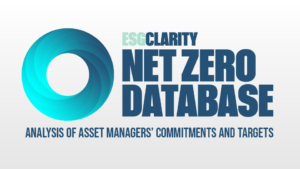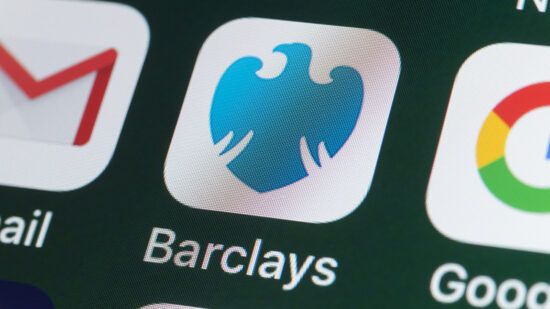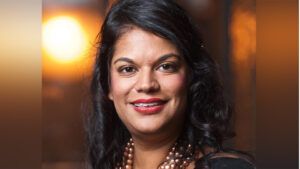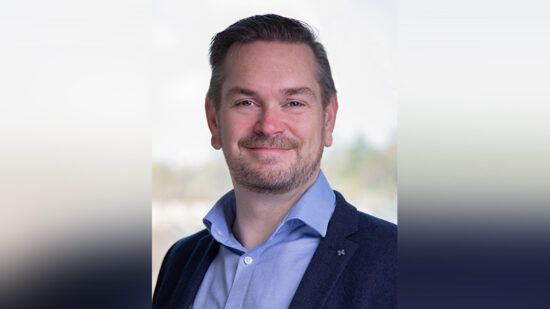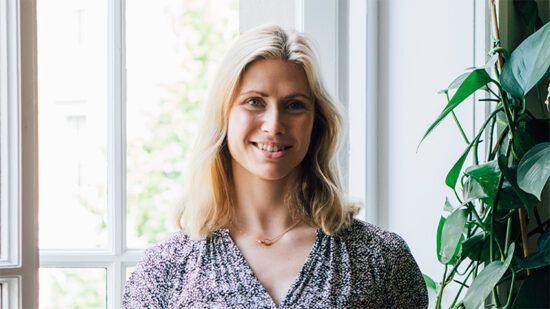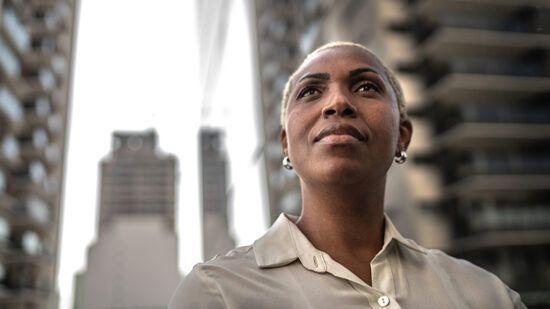Every CIO today is placing geopolitical risk at the top of their agenda, said Tobam’s Christophe Roehri in this Green Dream video interview, but assessing civil and democratic rights is essential in financial markets as they are increasingly impacting economic growth, he added.
Paris-based firm Tobam recently launched the LBRTY fund, an equities investment vehicle that will exclude non-democratic countries based on factors including civil liberty, inclusiveness, rule of law and corruption. Roehri shares how Tobam assesses the direct and indirect risks using data from various organisations, and why “this concept is going to make its way in the asset world because it’s much less controversial than ESG metrics”.
Watch the full video interview above and read the transcript below.
NK: Hello and welcome back to the Green Dream video interview series. I am Natalie Kenway and today I’m joined by Christophe Roehri, who is deputy CEO and chair of the ESG committee at Tobam. Thank you so much for your time today, Christophe.
CR: Thank you for having me, Natalie.
NK: Tell us briefly about the strategies that you’re involved in and the firm’s approach to sustainability. How does this differ being responsible for quant strategies?
CR: The short answer to that is included in the name of the company, the name of the company’s to run Tobam, and it stands for Think Out of the Box Asset Management.
So we try to do things differently, obviously. And we essentially try to do that in two dimensions, one on the corporate side and the other one is on the portfolio we are managing. And so on the corporate side, I think we’ve tried combine common sense and imaginative. Common sense is everyday life at the office and also looking at our carbon footprints, and the things that I believe are not completely original in the approach. Imaginative is in the sense that we want to go further than the traditional approach and let me give you an illustration of that.
I think today many corporates are computing their carbon footprints. And the way we’re doing them is a bit special, as we’ve been doing it for the past three or four years. We are now including the COP, the carbon footprint of the employees. What does it mean? It means that we do what people call Scope 1, 2, 3, and we add to that some kind of computation of the employee carbon footprint.
And we monitor that and collectively we try to work on that metric as well, not only the corporate itself, but adding the employees as well.
So that’s one illustration of what we do on the corporate side. Another illustration maybe is the efforts and the partnership that we’ve been setting up with human rights organisations. We started that in 2009, so it’s been almost 15 years now and the idea there initially was to compute or to offset our footprint in emerging markets.
As soon as you invest in emerging market countries, for some countries you are dealing with countries where human rights are not exactly at the top level. And soour initial thinking was to say, let’s try to offset the the investments we do in these countries. And how could we do that? We asked a few NGOs, and the answer was to support human rights.
And this is how we came up with this partnership. And that’s what we’ve done at the corporate level, up to 10% of our earnings for the past 15 years.
NK: I didn’t know that Tobam stood for Think Outside the Box, so that’s good to know. The company has also made a commitment or various commitments that you talked about there human rights but also a commitment obviously at 150% of its carbon footprint by financing reforestation programmes.
Can you tell us a bit more about that?
CR: I think the way we we offset the government footprint is pretty standard on the forestation programmes are something that’s, in our mind, make sense. You have two ways to have an impact on the carbon metrics. One way is to reduce your emission and the other ways to offset.
We are trying to work on both. Our methodology for measuring that is pretty comprehensive and, we believe, original. I believe the human rights initiative is a bit more original maybe. And also, why do I insist on this one? Because it led us to actually launch new investment strategies. This is because we actually initiated these partnerships with human rights NGOs that we came up with our latest investment strategy that’s called LBRTY, and that’s specifically aimed at designing a portfolio based on civil and democratic rights metrics.
NK: Let’s talk a bit more about that. What kind of things does that fund investing? How does it work and what are you hoping to achieve?
CR: I think the first remark that’s needed here is to say that our business is to be an asset management company. So we are not here to define what’s good versus what’s bad or try to approach investments with a moral angle.
We are here to generate performance for our clients, and it is in this framework that we actually researched the implication of autocratic versus democratic regimes in financial markets. And our intuition was based on a few publications that have been made by major economists. These publications were all pointing towards the same direction. Democracy is good for business and autocracy is actually deteriorating the economic growth at the country level.
We are asset managers, so we are dealing with stocks. We are buying and selling stocks. We are not investing in countries. And so we try to translate that fact. That’s evident from the world of economists to the world of portfolio management. And we came up with an approach that’s aiming at reducing the exposure of the portfolio to autocratic regimes.
The idea is, that by doing that, we’re going to perform better than the portfolio which is not taking that dimension into account. What we called that in the you know, in the language of the financial markets, we call that the autocracy risk factor. And we are finding a way to measure and to monitor this risk factor in any public equity portfolio that you can think about so that you can give me your portfolio and I could come back to you and say, well, your exposure is 3.5, and if you want to minimise that, you can go back to, you can go down to two or 1.5.
And what we do in our portfolio is we choose the portfolio with the lowest value for that. How do we do that? Well, the idea is pretty simple. There are two major steps. The first step is to define what we are talking about. So what is an autocracy? What is a democracy? And the good news here is that we have plenty of data available. Probably in the UK, the most well known organisation working on that dimension is called the Economist Intelligence Unit. Now, you might know that they are publishing what they call the Democracy index. So there is plenty of data there, but they are not alone. You have the very rich and resourceful organisations. One of them is called Freedom, and it is hosted by a Swedish university.
Another one is called Freedom House in the US in Washington DC. And all these organisations are publishing metrics for the level of democracy in different countries in the world so that you can say, well, the UK is there, the US is there, France is there, China are, Saudi Arabia, etc. and you have a rating for each and every country.
The first step we’re going to do is we’re going to exclude all the countries that are below a certain level in terms of rating because we’re going to call these countries autocratic regimes. So it’s not a moral look at China or Saudi Arabia. It’s a rating of the level of democratic and civil rights in this country, which are a consequence of the current regime.
The second step, which to my knowledge no one is actually doing in the industry as of today, is to measure what we called indirect exposure. What is the indirect exposure? When you look at LVMH and you assess the exposure of LVMH to these regimes, to these countries, what is LVMH’s exposure to China, to Qatar, to Saudi Arabia, to Russia?
And we add up these exposures so that we can come up with a rating for each and every company that listed in democratic countries. So I can take any UK company and I can tell you this is the exact exposure of this company to autocratic regimes. The last step is to build a portfolio with the lowest exposure to this metric so that we can claim that if you invest, we still trump you actually have much lower exposure to what’s going on in autocratic regimes.
This is a bit technical, but the high level picture of what we’re doing but let me give you what I believe is a powerful illustration of this; If you look at the emerging markets today, and when I started working in asset management, it was 20 years ago, and all CIOs or chief economists were advising clients to invest in what was called ‘Brics’.
This is Brazil, Russia, India, China and South Africa. And the rationale for that was this is where growth is going to happen 20 years ago. And I think the economists and CIOs were right – this is where growth happened. The share of China in the world economy went from 7% to 19% over 20 years. Okay the performance of China of the Chinese equity financial markets during the same time frame was actually below the performance of all other countries.
Value was created in China over 20 years. A lot of value has been created but as an investor, you have not been able to have this performance related to this value creation. Why? Because of the lack in civil and democratic rights. And for me, this is a very powerful illustration. Don’t invest your money in countries where you are not allowed, in a way, to have this performance because of the lack of these dimensions that are extremely important.
NK: There is so much in there to talk about, but, you know, it will be really interesting to see how that plays out. Perhaps we can catch up in a year’s time to talk about some of the investments or projects. So what else is on the agenda from a sustainability perspective for Tobam this year?
CR: We continue to work on on different strategies.
The one I just described is called LBRTY, and we launched last year. So this is what is using most of our time these days. We do also run the other strategies that are called Maximum Diversification, which also has a very original standpoint and investment process. Overall, we continue to research the impacts and the characteristics of the ESG dimensions in portfolio.
Obviously, there is a huge debate on that and whether this is actually good or bad for performance and what is the impact on our side. We are doing a lot of research on that. We are also looking at the implication in terms of implementation. Our focus today is really on Liberty. The ideas that we’ve developed on Liberty could very well be applied on other asset classes.
You can think about fixed income, of course, which is the largest part of the markets. That also is very interesting in terms of the dimension of the geopolitical risk. At the end of the day, we believe that in terms of sustainability, a lot of work, a lot of research has been done on the dimension because of the carbon footprint.
Why? In fact, because there is a metric you can measure. And as soon as you have a metric, people like to use it and then you have something concrete you can actually act upon. We are trying to develop metrics on the spot, which is the is democratic thing and we believe that this is where the future development of sustainability, long term investing is going to be.
Because today everybody’s worried about the comeback of the geopolitical risk. And the geopolitical risk is on the top of the agenda of every CIO today. And an additional remark to that is, I was referring to the rating, the country ratings that are published by The Economist, or other organisation. What is really interesting is that when you look at the Economist, Freedom House, Freedom, they use different metrics they use different research, different experts, but the results they are publishing are really converging.
There is really a consensus on this dimension, which is not always the case on other typical ESG metrics. If you look at an electric car one analyst could tell you it’s a great company because it’s electric car. And another one is going to tell you it’s not so great in terms of ESG because the governance is poor, because Elon Musk is deciding everything alone.
And so you have this type of discrepancy sometimes in ESG ratings that you don’t have in the field of democracy. And for that reason, I believe this concept is going to make its way in the asset world because it’s much less controversial in a way than ESG metrics.
NK: Yeah, really interesting points there. Well, thank you very much for sharing all of your insights with us. Great to chat with you. We always end the Green Dream of one more question is what is your favourite sustainable drink or snack?
CR: As much as we try to be innovative on the on the investment side, I’m going to be boring on the on this question. I think for me, the simplest and the most effective answer to that is filtered water. I’m always amazed by the amount of plastic bottles that you continue to see used by people at their home in restaurants. And I think it’s a very simple trick that is absolutely powerful If you want to have an impact on that dimension.
NK: Yes, completely. Great. Well, thank you very much for your time, Christophe.
CR: Thank you very much.


